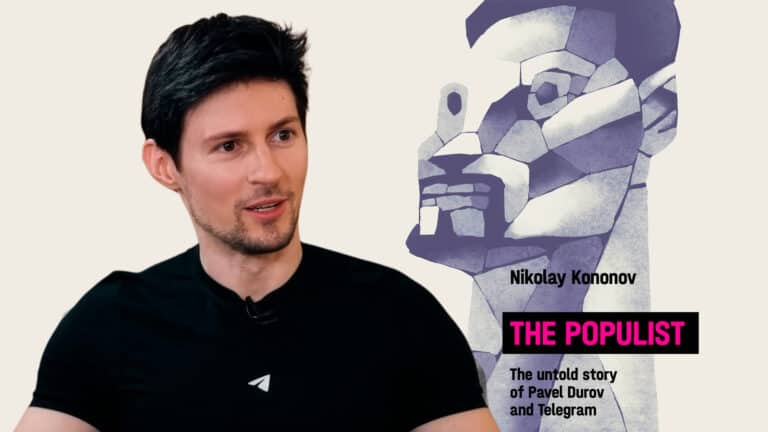Microfinance organizations performed well even during the pandemic thanks to some changes in legislation, which entered into force at the beginning of 2020.
Kursiv Research has identified ten key players of the industry based on their assets. These are fast-growing companies full of ambition, which rely on advanced technologies and broad product lines.
Growth During the Quarantine
According to Kazakhstani law, credit cooperatives, pawnshops, and microfinance organizations are all microfinance companies controlled by the Agency for Regulation and Development of the Financial Market (ARDFM). As of July 27, there are 1,033 such entities in Kazakhstan.
The most popular loan issuers are pawnshops, which offer low-income customers an easy way to get money; there are 597 (or 57.8%) pawnshops in the country. It doesn’t work this way regarding credit cooperatives though. As World Values Survey shows, about 72.6% of Kazakhstanis believe they need to be careful when dealing financially with other people.
In addition, four in five people do not have savings. As a result, there are only 216 (or 20.9%) loan cooperatives in Kazakhstan.
Another popular segment is microfinance companies, which had been thriving even amid the pandemic last year. Currently, there are 220 microfinance organizations (MFO) in contrast to 199 last year. According to industry representatives, some of the newcomers have just been added to the MFO sector from other sectors by new legislation, so they aren’t new players.
Given the bigger number of MFOs, their total assets have also risen, according to the National Bank. As of April 2020, this rate reached $1.3 billion. On a relative basis, this growth is about 44.3%, which is higher than it was three years in a row before the pandemic (41.9% on average).
.jpg)
Despite the pandemic, the loan portfolio of Kazakhstani has increased from $742 million to more than a billion dollars. The acceleration of this dynamic surged 10 percentage points when compared to the results of the same period in previous years.
«There was a merger of the previously unregulated online lending sector with traditional microfinance organizations, which have always been under the control and supervision of the state,» YerbolOmarkhanov, director of the Association of Microfinance Organizations of Kazakhstan told to the Kursiv edition.
Ramazan Dosov, a leading analyst from the Association of Financiers of Kazakhstan, agrees and draws attention to another reason: “Last year, when people struggled with macroeconomic difficulties, many of them were forced to rely on loans, including loans from MFOs to maintain their usual level of consumption,” he said.
The inclusion of MFOs in the updated version of the state program «Business Roadmap – 2025», which was adopted at the end of December 2019, had a positive impact on the industry. Its third edition focused on small businesses, including micro-entrepreneurship. Moreover, the government began to support small businesses through MFOs as well.
.jpg)
However, MFOs failed to avoid some negative trends. For example, overdue over 90 days (NPL) increased by 1.5 times, from 3.9% at the beginning of April 2020 to 5.9% over the same period of this year. Although, in contrast to banks, Kazakhstani microfinance organizations historically have no big burden of bad loans. The quality of their loan portfolio looks a little bit better than the same marker in the banking sector, where NPL reached 7.1%.
Old Players and Two Newcomers
To figure out who are the leaders of the market, we’ve ranked them by the size of their assets. These statistics are regularly provided by the National Bank. The top 10 companies control 73.2% of the entire MFO market. As of April 1, 2020, this concentration was even higher – 82.4% of all assets.
.jpg)
The leader is KMF Company. This is the biggest microloan provider in Kazakhstan. It was established in 1997 in Taldykorgan as a loan cooperative of local entrepreneurs and now it has representative offices all over the country. The company has transformed into a microfinance organization and has attracted new foreign investors and big loans from international development institutes.
Last year the company lost a small portion of its assets (–0.34%) but ramped up its loan portfolio. KMF was able to keep its leading position thanks to its experience and loans from the European Bank for Reconstruction and Development (€40 million), French PROPARCO ($15 million), and Swiss investment fund SIFEM ($10 million). The company has also reached a deal with Kazakhstani fund DAMU, which will provide $11.7 million for microloan lending.
Because of the pandemic, KMF has created a mobile application which people can use to apply for loans with no visits in person. According to its 2020 report, there were about 150,000 users of the KMF mobile app at the end of that year. Another new endeavor by KMF and EBRD is so-called green microloans, which are aimed at housing modernization with new materials and technologies.
Another company that got strong gains because of the popularity of microloans is Toyota Financial Services Kazakhstan, a subsidiary of Toyota Motor Corporation. This is also a microloan provider, whose assets have risen by 2.18% and loan portfolio by 3.21%.
The third leader, a newcomer to the ranking, is MyCar Finance. It’s a part of Mycar.kz startup, which helps people sell or buy their cars.
The website is supported by Kazakhstani mogul Nurlan Smagulov, who wants Mycar.kz to be a main competitor of the Kolesa.kz website.
The second ambitious newcomer of the ranking is TAS Finance Group with $42.6 million of assets and sixth place in the ranking. The company was founded in 2010, when the classic pawnshop TAS Credit was launched, which provided loans secured by goods and gold products. In 2012, TAS Credit launched the second direction – car loans; three years later TAS began geographic expansion. The financial background and relevant experience of DulatTastekeyev, the company’s founder allowed him to transform the former pawnshop into a financial group. In previous years TAS managed to open 33 branches in 24 Kazakhstani cities and three branches in Moscow. In 2019, the company entered the international platform Mintos, where members invest in loans.
At the end of the first quarter of this year, TAS Finance Group reported about 19,000 clients. Today the group provides a wide range of services from microloans for individuals and legal entities to leasing and insurance.
TAS Finance Group has its own IT platform with scoring and the ability to issue a microloan in half an hour. The founder wants to turn the company into a high-tech innovative financial player that could compete outside of Kazakhstan. There are plans to enter the market of Uzbekistan and Indonesia.
ROA and ROE
To identify the most effective microloan providers among the top 10, we’ve ranked them according to such indicators as lending efficiency, accumulated return on assets (ROA) and equity (ROE). The indicator «Retained earnings (uncovered loss)», published by the National Bank of the Republic of Kazakhstan, was taken into account as profit.

The top five MFOs in terms of their lending efficiency, which is calculated as the ratio of the loan portfolio to assets, is as follows: MyCar Finance (98.87%), Shinhan Finance (97.23%), Arnur Credit (N/A), TAS Finance Group (89.22%), and KMF (87.76%). In other words, the leading players are focused on their core activities and most of the assets are directed to lending activities.
ROA (the ratio of profit to the number of assets) is a financial indicator that speaks about the effectiveness of using property, including borrowed funds. The ranking of the largest companies by this ratio is the following: Creditum (17.00%), Lending and Financy technologies (11.37%), TAS Finance Group (6.08%), OnlineKazFinance (4.90%), and KMF (2.24%).
.jpg)
In contrast, to return on assets, ROE reflects the efficiency of using only equity capital (calculated as the ratio of profit to equity). Creditum (67.55%), OnlineKazFinance (38.66%), Lending and Financy technologies (33.11%), TAS Finance Group (24.58%), and MyCar Finance (10.56%) are leaders in regard to this indicator.
Generalized conclusion on the indicators of accumulated ROA and ROE: companies from the top 10 with a significant volume of assets and the size of equity capital show lower retained earnings – at the stage of more sustainable development, these funds are either transferred to equity or distributed among shareholders. A better analysis of the players would be possible if all players have published their financial statements under IFRS rules.
.jpg)
Institutionalization Trend
The past year continued the structural changes that were started in 2019 with the adoption of amendments to the Law on Microfinance Organizations. For example, MFOs have received the right to issue bonds on the stock exchange. This is exactly what TAS Finance Group did in December 2019, becoming the first MFO to issue two-year bonds on AIX for $9.4 million with a coupon rate of 20%.
Last year some other companies did the same: R-Finance (AIX; five-year bonds for $10 million at 7% per annum), BastauAgro Finance (AIX; two-year bonds for $6.6 million with a coupon rate of 5.5%), Credit Time (KASE; two-year bonds for $1.7 million, coupon rate – 20%) and a ranking participant – OnlineKazFinance. This company entered the stock exchange in the Kazakhstani jurisdiction. In August last year, the company carried out an offering on KASE, issuing two-year bonds for $9.4 million at 19% per annum. In September 2020, the company placed two-year bonds on AIX for $7 million in total, the coupon rate was 9% per annum.
Last year was rich for major structural changes in the microfinance sector, according to YerbolOmarkhanov. They had a direct impact on the modification of the microfinance market’s landscape because of stricter regulation, license requirements and treating MFOs as full participants in the financial system.
«On behalf of the association, I can say that we are happy with the inclusion of non-bank credit organizations in the perimeter of the state’s control and supervisory functions,» says Omarkhanov. «All those changes bring order to this lending sector, increase transparency and force lenders to act more carefully towards consumers’ rights.»
In 2020, like many commercial banks, MFOs had decided to grant a delay in payments for those clients who were hit by the pandemic.
«Given that MFOs operate with no support from the government, the actual freeze of the loan portfolio negatively affected the financial stability of the entire sector,» he highlighted.
MFOs Lack Cheap Money
This year ARDFM has continued to put things in order in the industry. For example, from January 1, 2021 microloans can be issued only by licensed companies. Also, since May MFOs are obliged to indicate the size of the annual effective rate of return in advertising; the regulator has also established requirements for the content of the loan agreement and its mandatory conditions.
There is a unified mandatory legal regime to dispute settlements in case of overdue debts. In addition, MFOs have to inform credit bureaus about their nominal rates and annual effective rate of return on issued loans.
«The industry has moved out of the shade of unregulated business and now thrives inside the legal environment. It will have a positive effect on both lenders and borrowers,» Ramazan Dosov noted.
Microfinance organizations are allowed to earn by charging fees and penalties but they are prohibited from earning on commissions and other payments related to the issuance and maintenance of microcredit even though banks do so with no restrictions.
«This is an unfair attitude towards MFOs that creates regulatory arbitrage in the lending market,» Yerbol Omarkhanov believes.
Among the factors hampering the microfinance industry, the biggest one is the lack of funding inside the country, according to Yerbol Omarkhanov. This factor drives microloan providers to seek money abroad. As a result nine in ten tenge of all microloans have been issued with the help of foreign borrowing.
But foreign financial flow is always at the risk of drying up if a crisis hits, which definitely will lead to stagnation in the sector.
«For many years, our association has talked about the creation of internal mechanisms of funding, including an apex fund but the problem is still unsolved,» said Omarkhanov.













